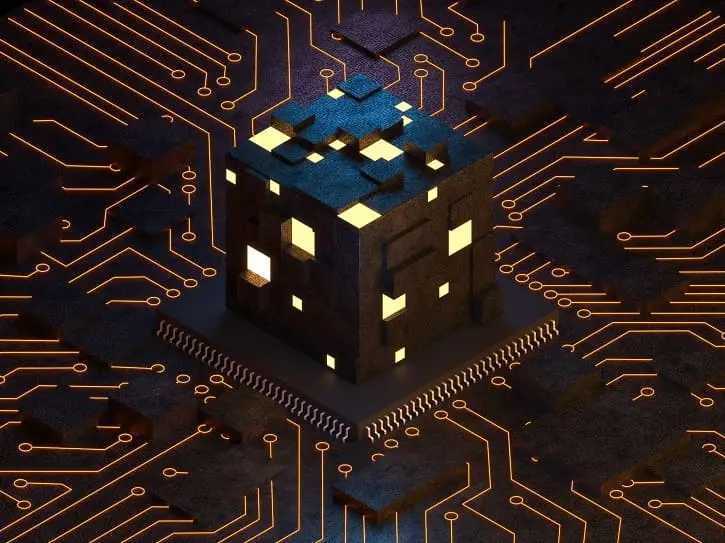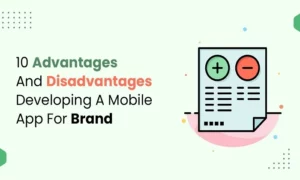In this technological era, two distinct yet profoundly influential forces have captured the world’s attention: Artificial Intelligence (AI) and Web3. Each of these innovations has independently reshaped our digital landscape. However, it is at their intersection that a captivating realm of potential unfolds. The fusion of AI and Web3 promises to reshape our interactions with the digital sphere and open a gateway to unlimited possibilities.
AI
Artificial Intelligence, once confined to the realm of imagination, has transcended its early role as a mere tool for automation. Today, AI orchestrates complex tasks across industries, from deciphering medical diagnostics to generating artistic masterpieces.
Machine learning algorithms, capable of intricate pattern recognition, have propelled AI beyond mere mechanization. Additionally, natural language processing, lending machines the ability to comprehend human speech, has played a significant role in this advancement. Now, AI simulates cognitive processes, mirroring human intelligence in unprecedented ways.
Web3
On the other side of the digital revolution stands Web3, a paradigm shift in the way we interact with the internet. Emerging as a successor to the current Web2 landscape, Web3 is characterized by decentralization, user sovereignty, and transparency.
The underpinning technology of blockchain grants individuals ownership of their data and transactions, eradicating intermediaries. Decentralized applications (dApps) and blockchain-based transactions exemplify Web3’s ethos of peer-to-peer empowerment. However, it is imperative that decision makers hire blockchain developers who are skilled in web3 development to build inventive solutions.
How AI in Web3 Makes Layers of Web3 Intelligence
AI in Web3 introduces layers of intelligence that enhance the capabilities and functionalities of various components within the Web3 ecosystem. These layers of Web3 intelligence encompass intelligent blockchains, intelligent protocols, and intelligent decentralized applications (dApps). Each of these layers contributes to a more dynamic and sophisticated digital environment.
Intelligent Blockchains
AI-driven intelligence can be infused into the very foundation of Web3 through intelligent blockchains. Traditional blockchains operate as distributed ledgers that store transactions and data securely and transparently. Blockchains can evolve beyond their basic functionality by integrating AI capabilities.
Smart Contract Adaptability
AI can enable smart contracts to be more than static agreements. With AI, smart contracts can dynamically adjust based on real-time data, making them adaptive to changing conditions and more responsive to real-world events.
Predictive Analytics
AI can analyze historical blockchain data to identify patterns and trends. This predictive analysis can be used to anticipate future market movements, potential security threats, and other emerging trends within the blockchain ecosystem.
Enhanced Security
AI-powered security algorithms can continuously monitor the blockchain for anomalies and suspicious activities. They strengthen the platform’s security against attacks and vulnerabilities.
Intelligent Protocols
Web3 protocols govern how interactions occur within the decentralized ecosystem. AI-driven intelligence can enhance these protocols to make them more efficient, user-centric, and adaptable.
Dynamic Network Routing
AI can optimize the routing of data and transactions within the decentralized network. It ensures that interactions are routed through the most efficient and reliable paths, thereby minimizing latency and congestion.
Personalized Interaction
AI-powered protocols can learn from users’ past behaviors and preferences to tailor their interactions with dApps and other participants in the network. This personalization enhances user experiences.
Adaptive Consensus Mechanisms
AI can optimize consensus algorithms based on network conditions. This adaptability helps in achieving consensus more efficiently, especially in scenarios with fluctuating network activity.
Intelligent Decentralized Applications (dApps)
DApps are applications built on top of Web3 infrastructure. AI can empower dApps to provide more sophisticated and personalized experiences.
Natural Language Understanding
AI-driven dApps can comprehend and respond to natural language inputs. They enable more intuitive interactions with users.
Content Recommendation
By analyzing user behavior and preferences recorded on the blockchain, dApps can suggest relevant content, products, or services that align with individual users’ interests.
Automated Decision-Making
AI-powered dApps can assist users in decision-making. They analyze relevant data and provide insights, thereby aiding users in making informed choices.
Real-Time Insights
AI can process real-time data from the blockchain and external sources to provide users with up-to-date insights and predictions. Thus, it enhances the value and usability of dApps.
How AI and Web3 Intersect
The convergence of AI and Web3 has given rise to a synergistic relationship that has the potential to reshape our digital experiences. Here are some key areas where AI and Web3 intersect:
Smart Contracts and AI Governance
Smart contracts, self-executing contracts with the terms of the agreement directly written into code, are a hallmark of Web3. By integrating AI into smart contracts, we can create self-adapting agreements that respond to real-world conditions. This opens the door to more dynamic and context-aware contracts, reducing the need for manual intervention and enhancing efficiency.
Decentralized Data Marketplaces
AI thrives on data, and Web3’s emphasis on user ownership of data aligns well with AI’s data requirements. Decentralized data marketplaces, powered by blockchain, can enable users to securely share their data while maintaining control. AI algorithms can then access this data with user consent, fostering the development of more personalized and accurate AI models.
Enhanced Personalization and Content Discovery
The marriage of AI and Web3 can lead to more personalized content experiences. AI algorithms can analyze users’ blockchain-based interactions to gain deeper insights into their preferences and behaviors. This information can be used to curate content and services that truly resonate with individual users.
AI-Driven Verification and Trust
Web3’s focus on decentralization and transparency can be reinforced by AI’s ability to verify and validate information. AI-powered algorithms can sift through vast amounts of data to identify authentic sources. It enables combating misinformation and enhancing the credibility of information on the decentralized web.
Conclusion
As AI and Web3 development continue to evolve, their collaboration presents both exciting opportunities and complex challenges. Privacy concerns, ethical considerations, and technical hurdles will need to be addressed to fully harness their potential. However, the fusion of AI’s cognitive abilities with Web3’s decentralized architecture could pave the way for a digital landscape that is more intelligent, user-centric, and equitable.







